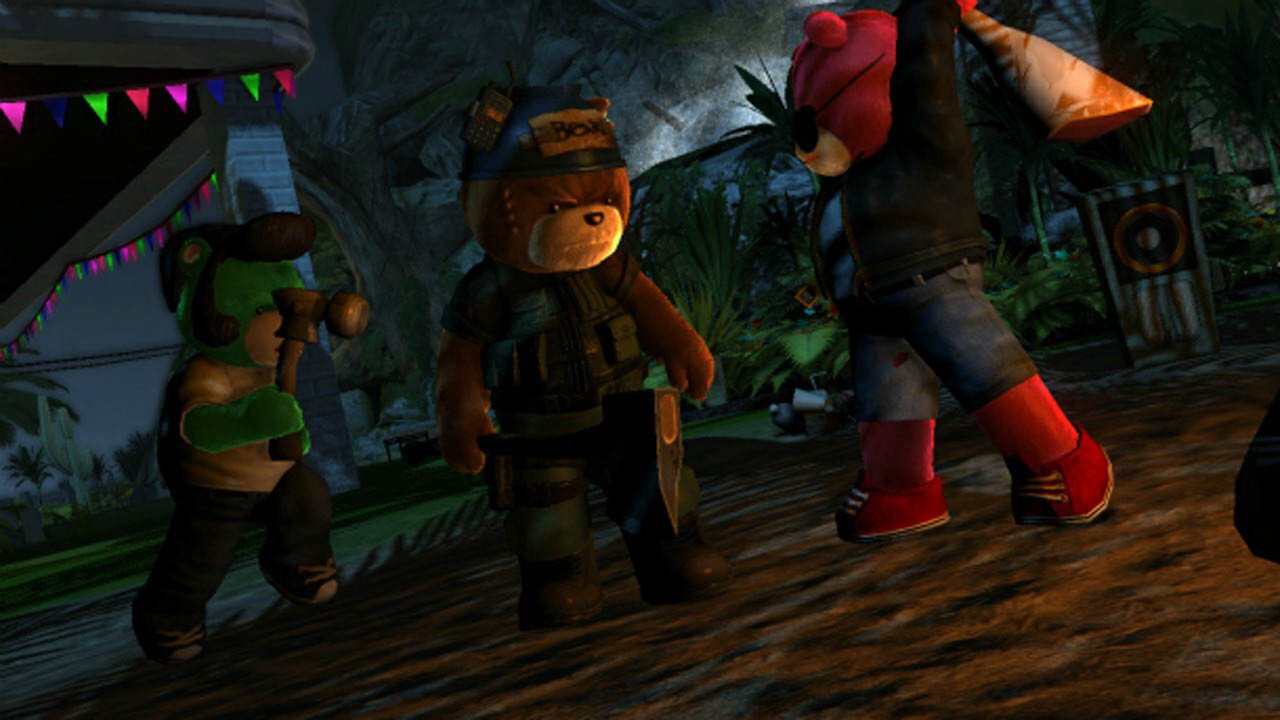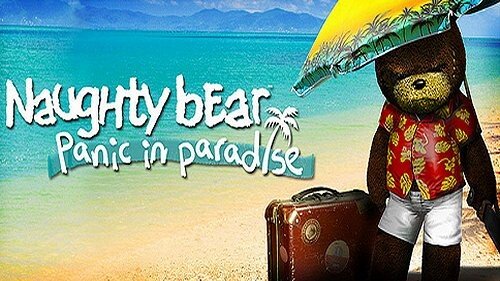Horrifying For All The Wrong Reasons
Naughty Bear is back after a not very successful debut, which makes you wonder how a sequel got approved. Someone out there must like the idea of a murderous teddy bear out on a psychotic quest for stalker-y vengeance. On paper, that actually sounds like an intriguing idea, but in execution—if the first game was anything to go by—it’s not a successful venture. The sequel, Naughty Bear: Panic in Paradise tries to tweak a broken formula, but doesn’t go nearly far enough to fix the fundamental problems of the game.
Satire Gone Wrong
The carefree and negligent bears of the original have yet to learn their lesson. After the carnage Naughty Bear wrought in the first game for not being invited to a picnic, you’d think everyone would have learned their lesson when they hosted a party on a tropical island. They don’t, and Naughty Bear’s rage knows no bounds as the slaughter (in this case “defluffing” bears) begins again.
Right from start, like its predecessor, it’s clear that Panic in Paradise is a budget game. There’s the deliberate minimalism of something like Journey and then there’s just plain unpolished, and that’s what the overall presentation is like here. Simple textures, clunky animation and a variety of flat or even buggy sound effects underscore a game with a bizarrely dark, cinematic soundtrack reminiscent of John Carpenter’s synth inspired horror tracks. It’s symptomatic of a greater problem for Panic in Paradise where the game simply doesn’t know what it wants to be and so none of its elements mix well.
On the one hand, you have the seemingly satirical notion that a psychotic teddy bear is causing immeasurable psychological torture and outright murder on a bunch of other teddy bears that spurned him. It’s not a new notion; the idea of gruesome violence on cute animals for comedic effect has been well executed by programs like Happy Tree Friends and Robot Chicken, but where those shows play up the ludicrousness of the situation for laughs in the face of graphic violence, Naughty Bear plays it straight. Victims are stalked, harassed to the point where they can go insane and even kill themselves, and murders are committed with QTE style executions that resemblance the brutal finishers of Sleeping Dogs. Naughty Bear himself doesn’t feel like a spurned victim on a quest of righteous vengeance, he feels like a bully picking on innocents. That’s an uncomfortable feeling for most gamers that would like to think they’re not bad guys, and Naughty Bear fails to walk the line. Mechanically, Panic in Paradise is quite complex, with a number of rules and features that are inefficiently blasted at speed with lengthy verbal explanations at the game’s start. It leaves players with a sense of disoriented information overload and is hardly an acceptable tutorial considering most contemporary games will ease players into mechanics by drip feeding them one at a time and letting players DO the assigned lesson, rather than pausing the action to lecture them.

That is perhaps the most surprising and confounding thing about Panic in Paradise. For all its aspirations to be a game about dark comedy, it asks a lot of its players. Each of the 30+ victims on Naughty’s “kill list” must be killed in a specific way. These win conditions rapidly ramp up in complexity, and get very obtuse, such as one kill that requires the player get clothes from a bear that can’t normally be dragged off into the woods and killed like other bears. It takes some experimentation—with no hints from the game at all—to figure out that putting the bear in the injured, limping state is required before the disguise can be grabbed. At the same time Panic in Paradise utilizes a bizarre RPG component that requires leveling Naughty Bear through the clothing and weapons he uses. If you “master” a clothing or weapon item by maxing out the XP it can accrue, Naughty Bear will stop getting XP from that slot until a “virgin” item is equipped again. It makes little sense in writing and even less sense in actual gameplay. The bizarre RPG/“kill puzzle” concept is coupled with a stealth based game that badly cribs from the playbook of classics like Metal Gear Solid and Hitman, with nowhere near the same amount of success. All of this is tied up in a somewhat buggy game that has a tendency to freeze at odd moments. It’s more forgivable in a high caliber game like XCOM, but here merely gives you a much needed excuse to stop playing for a while before subjecting yourself once again to the overwhelming sense of repetition that is Panic in Paradise.
There is a core of originality to the premise of Naughty Bear: Panic in Paradise, and even some occasional moments of genuine humor. But it’s lost in a design concept that is awkwardly executed, with too many disparate elements that don’t gel together in an enjoyable way. At $15 or 1200 MS points for an overly long game that wears out its novelty early in the proceedings, this is a hard game to recommend. Had Behavior Interactive cut both the length of the game and its price by half, this might have been an easier pill to swallow. As it is, only those with an absolute hatred of teddy bears will see any long lasting value in this downloadable game. It’s not a horrifyingly broken game, but neither is it well designed enough to keep you wanting to come back for more.





